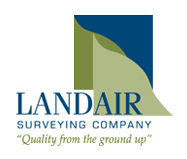Getting a good estimate on laser scanning: What you need to know
When it comes to getting an accurate estimate on laser scanning services, it’s all in the details. The more detailed information you can provide vendors upfront, the more accurate your estimate will be.
What kind of information do vendors need?
Floor plans of the site and photographs. This will go a long way in getting vendors the information they need to provide you with an accurate estimate rather than just a “high guess” because they’re not sure what they are scanning.
“Character” photographs. These photographs can show a few strategic shots, which are better than simply saying, “It’s an MEP room,” (though it’s really 40-feet tall). If possible, show examples of density.
Video walk-through of the site with a smart phone, complete with narration. This is extremely valuable to vendors to get a clear idea of the scope of the project.
Accurate information on the site and work conditions. This includes extenuating circumstances such as crews only being able to work between 11:00 PM and 5:00 AM, heavy factory work around the clock, extreme temperatures, mandatory safety training, difficult travel conditions (ex: 200 miles from the airport in “Nowhere, USA”), travel expenses not included in estimate, or dangerous site conditions like confined space entry that require special training.
For the best and most accurate price, be upfront and give providers a good idea of what they are getting into, including:
- Travel to and from site. Include air travel, luggage, rental car, hotel and location.
- Time on site. This is determined by how long it takes to begin work once crews get to the front gate and the available work hours. (Is it 4-6 hours max or 12 hours?)
- Work conditions. High-density projects take longer. Lots of vibration slows down the scanning process.
- Highly reflective material is very difficult to scan (ex: mirror glass, chrome pipes, shiny objects).
- Heavy foot traffic (mall), loading traffic (fork lifts), or plant process (moving machinery) can complicate the project.
- Dangerous conditions usually slow scanning, but crews can still perform and scan in sub-surface pipes or tunnels, interstate bridges and heavy construction zones.
- Night work only always takes longer and increases the difficulty.
Other pricing considerations include the expected deliverables from the job and the level of detail you need, which software package you want data delivered in (some are faster than others), how complex the environment and large the site, and if additional trips are required back to the site.
Remember: though scanning may only take a week or less, modeling can take a month, as it is still not automated.
Most scan projects are too big to e-mail, so you can expect to receive the full deliverable on an external hard drive. Raw point cloud data can reach “gigabyte size,” though finished models and 3D data sets are typically much smaller.
###
Tate Jones has over 40 years of experience in land and aerial surveying and was one of the country’s earliest adopters of 3D laser scanning technology. A nationally recognized expert in the field of 3D data capture, he has worked with hundreds of clients in the engineering, architectural and construction industries. Contact him at tjones@lasurveying.com or visit www.landairsurveying.com.


Leave a Reply
Want to join the discussion?Feel free to contribute!